Table of Contents Show
Bicep curls are one of the most popular and effective exercises for building and strengthening the muscles of the upper arm. But did you know that bicep curls can also help you burn calories and lose fat?
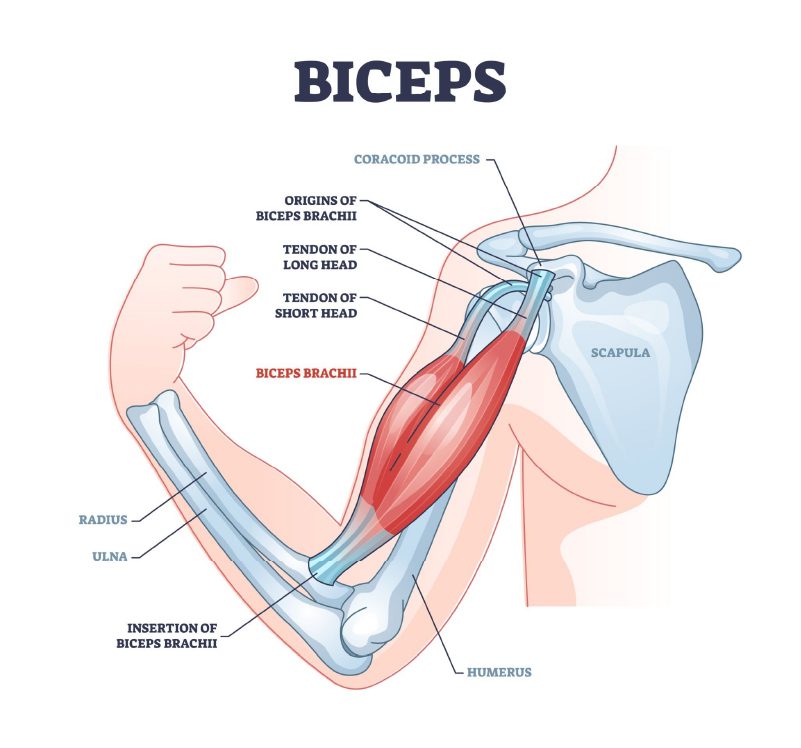

In this article, you will learn everything you need to know about how to do bicep curls properly, how many calories burned doing bicep curls, and how to make them more challenging and fun. Let’s get started!
What are Bicep Curls and How to Do Them?
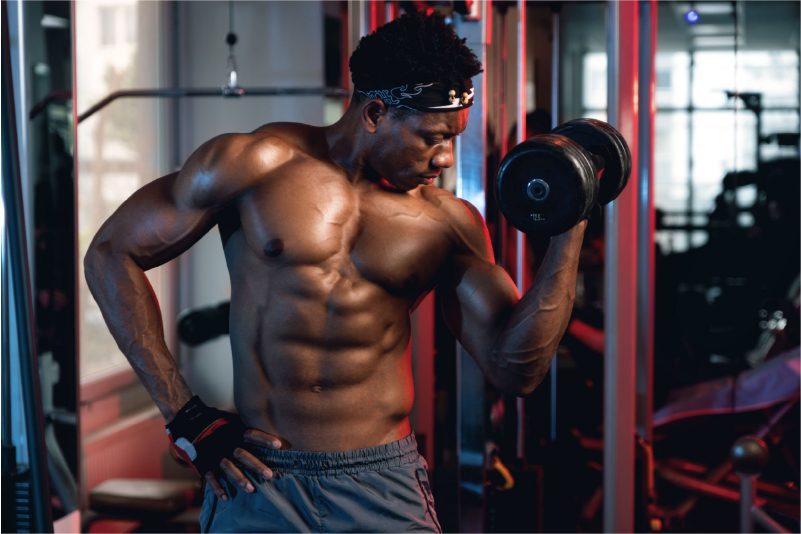

Bicep curls are a type of isolation exercise that targets the biceps brachii, the large muscle that runs along the front of your upper arm. The biceps brachii is responsible for flexing your elbow and rotating your forearm. Bicep curls also work the brachialis and brachioradialis, two smaller muscles that assist the biceps in elbow flexion and forearm rotation.
To do a basic bicep curl, you will need a pair of dumbbells or a barbell. Here are the steps to follow:
- Stand with your feet shoulder-width apart, your knees slightly bent, and your core engaged.
- Hold a dumbbell in each hand or a barbell with both hands, palms facing up. Let your arms hang down by your sides, with your elbows close to your body.
- Keeping your upper arms still, exhale and curl the weights up toward your shoulders, squeezing your biceps at the top of the movement.
- Inhale and slowly lower the weights back to the starting position, keeping tension on your biceps throughout the range of motion.
- Repeat for the desired number of repetitions and sets.
Finding out How many calories burned doing bicep curls
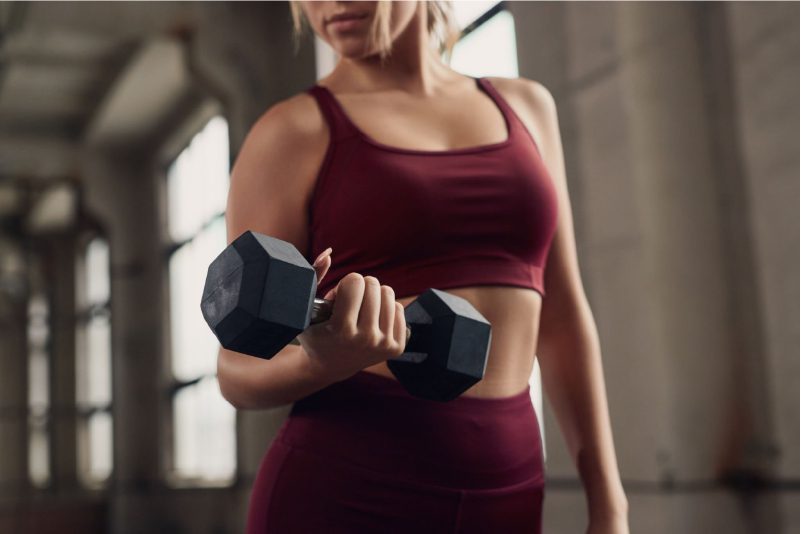

The number of calories burned doing bicep curls depends on several factors, such as your weight, the intensity and duration of your workout, and the amount of weight you lift. According to Harvard Health Publishing, a 155-pound person can burn about 112 calories in 30 minutes of weight training at a moderate intensity. This means that if you do 10 minutes of bicep curls with moderate weight, you can expect to burn about 37 calories.
However, this is only an estimate based on an average person. To get a more accurate number, you can use a calories burned calculator that takes into account your personal information and the specific details of your workout. For example, using this calculator, a 155-pound person who does 10 minutes of bicep curls with 20-pound dumbbells can burn about 54 calories.
Another way to estimate how many calories burned doing bicep curls is to use a heart rate monitor or a fitness tracker that measures your heart rate during exercise. Your heart rate reflects how hard your body is working and how much energy it is using. Generally speaking, the higher your heart rate, the more calories you burn. You can calculate your maximum heart rate by subtracting your age from 220. For example, if you are 30 years old, your maximum heart rate is 190 beats per minute (bpm). To burn more calories, you should aim to exercise at 70% to 85% of your maximum heart rate, which is 133 to 162 bpm for a 30-year-old.
How to Make Bicep Curls More Challenging and Fun?
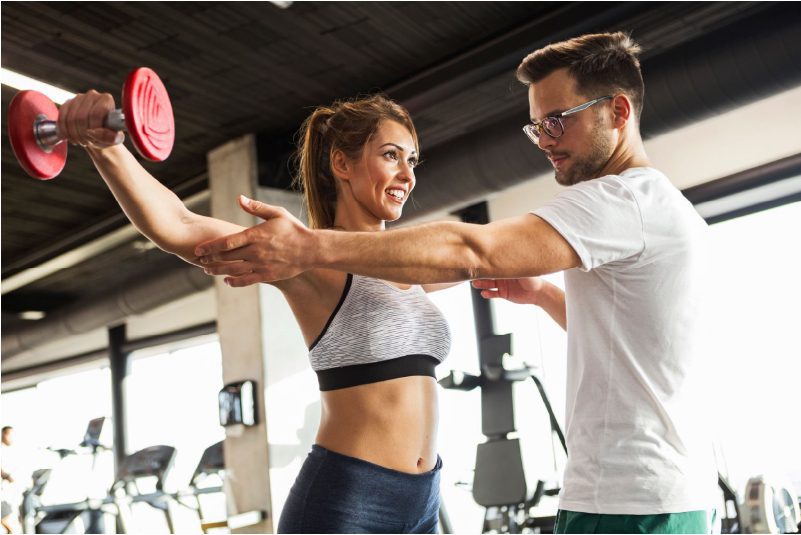

Calories burned doing bicep curls are a great exercise for building and toning your arms, but they can also get boring and repetitive after a while. If you want to spice up your bicep curl routine and burn more calories, here are some tips and variations you can try:
- Increase the weight or the number of repetitions or sets. This will make your muscles work harder and increase the metabolic demand of the exercise.
- Change the tempo or speed of your curls. You can either slow down or speed up your curls, or alternate between fast and slow reps. This will challenge your muscles in different ways and keep them guessing.
- Change the angle or grip of your curls. You can either incline or decline your body position, or rotate or supinate (turn outward) or pronate (turn inward) your wrists. This will target different parts of your biceps and add variety to your workout.
- Add some instability or balance to your curls. You can either stand on one leg or on an unstable surface like a Bosu ball or a wobble board. This will engage your core and stabilizer muscles more and improve your coordination and posture.
- Combine bicep curls with other exercises or movements. You can either do compound exercises that involve multiple joints and muscles like hammer curls with lunges or curl presses with squats, or do supersets that alternate between two different exercises like bicep curls with triceps extensions or reverse curls with lateral raises. This will increase the intensity and efficiency of your workout and burn more calories.
Benefits of calories burned doing bicep curls?
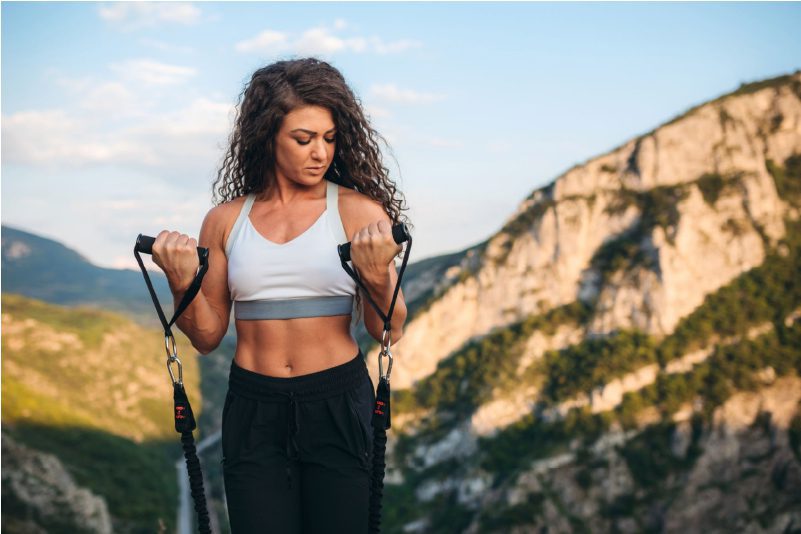

Bicep curls are not only good for your arms, but also for your overall health and fitness. Here are some of the benefits of calories burned doing bicep curls:
- They improve your upper body strength and endurance, which can help you perform daily activities like lifting, carrying, or pushing objects more easily and safely.
- They enhance your muscle mass and definition, which can boost your confidence and self-esteem.
- They increase your metabolic rate, which means you burn more calories even at rest, and help you maintain a healthy body weight and body fat percentage.
- They improve your joint health and mobility, as they strengthen the tendons and ligaments that connect your biceps to your elbow and shoulder.
- They prevent or reduce the risk of injury, as they protect your elbow and shoulder from overuse or strain, and balance the strength of your biceps with your triceps, the muscles that extend your elbow.
How to Stretch and Recover After calories burned doing bicep curls?
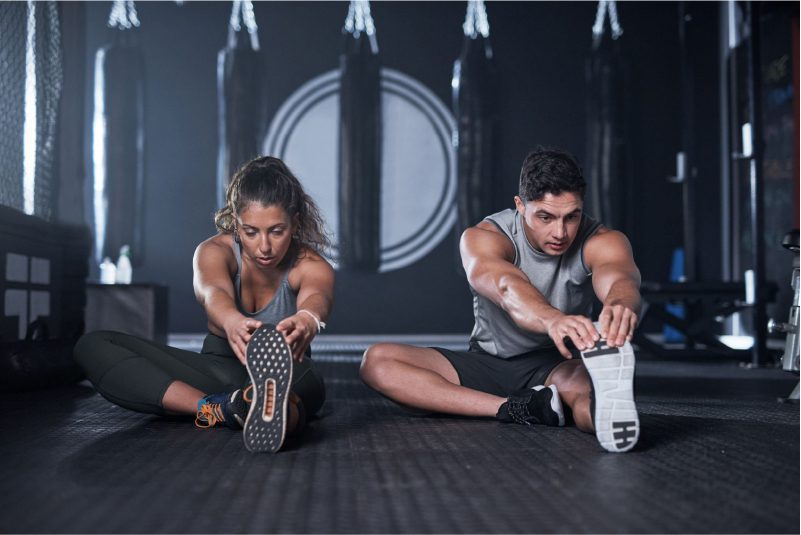

Bicep curls can cause muscle soreness and tightness, especially if you are new to the exercise or if you increase the intensity or volume of your workout. To prevent or relieve this discomfort, you should stretch and recover properly after calories burned doing bicep curls. Here are some tips to follow:
- Stretch your biceps after your workout, when they are warm and flexible. You can do this by extending your arm in front of you, palm facing down, and gently pulling your fingers back with your other hand. Hold this position for 15 to 30 seconds, then switch sides. You can also do this by placing your palm on a wall behind you, elbow straight, and turning your body away from the wall. Hold this position for 15 to 30 seconds, then switch sides.
- Massage your biceps with your fingers or a foam roller, applying moderate pressure and moving in circular motions. This can help release any knots or tension in your muscles and improve blood flow and oxygen delivery to them.
- Hydrate yourself with water or sports drinks, as dehydration can worsen muscle soreness and impair muscle recovery. Aim for at least 8 glasses of water a day, or more if you sweat a lot during exercise.
- Eat a balanced diet that includes protein, carbohydrates, and healthy fats. Protein is essential for muscle repair and growth, carbohydrates provide energy for muscle contraction and replenishment, and healthy fats reduce inflammation and support hormone production. Aim for 0.8 to 1.2 grams of protein per kilogram of body weight per day, 3 to 5 grams of carbohydrates per kilogram of body weight per day, and 20 to 35 percent of your total calories from healthy fats per day.
- Rest your biceps for at least 48 hours before doing another bicep curl workout. This will allow your muscles to heal and adapt to the stimulus. You can do other exercises that do not involve your biceps in the meantime, such as cardio, lower body exercises, or core exercises.
What are the Best Types of Bicep Curls?
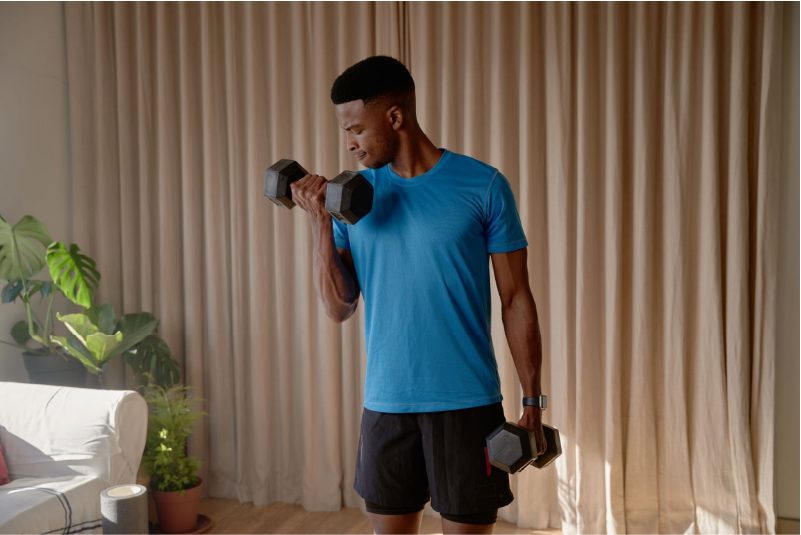

Bicep curls can be done with various types of equipment, such as dumbbells, barbells, resistance bands, cables, or machines. Each type of equipment has its own advantages and disadvantages, and can affect the difficulty and effectiveness of the exercise. Here are some of the best types of bicep curls and their benefits:
- Dumbbell curls: Dumbbell curls are the most common and versatile type of bicep curls. They allow you to adjust the weight and the angle of your curls, and to work each arm independently. Dumbbell curls can also help you correct any muscle imbalances or weaknesses in your arms, as you can use different weights or reps for each arm.
- Barbell curls: Barbell curls are similar to dumbbell curls, but they use a long bar with weights attached to both ends. Barbell curls can help you lift heavier weights and overload your biceps more. Barbell curls can also improve your grip strength and forearm muscles, as you have to hold the bar firmly and evenly.
- Resistance band curls: Resistance band curls are a great alternative to dumbbell or barbell curls, especially if you do not have access to weights or want to add some variety to your workout. Resistance band curls use elastic bands that provide constant tension and resistance throughout the range of motion. Resistance band curls can also help you improve your stability and coordination, as you have to balance the band and control the movement.
- Cable curls: Cable curls use a pulley system with a cable attached to a weight stack. Cable curls can provide a smooth and continuous resistance that mimics the natural curve of your biceps. Cable curls can also help you isolate your biceps more, as you can adjust the height and angle of the cable to target different parts of your biceps.
- Machine curls: Machine curls use a fixed machine that guides your movement and supports your posture. Machine curls can help you focus on your biceps without worrying about your form or technique. Machine curls can also help you prevent cheating or swinging, as you have to follow the predetermined path of the machine.
How to Avoid Common Bicep Curl Mistakes?
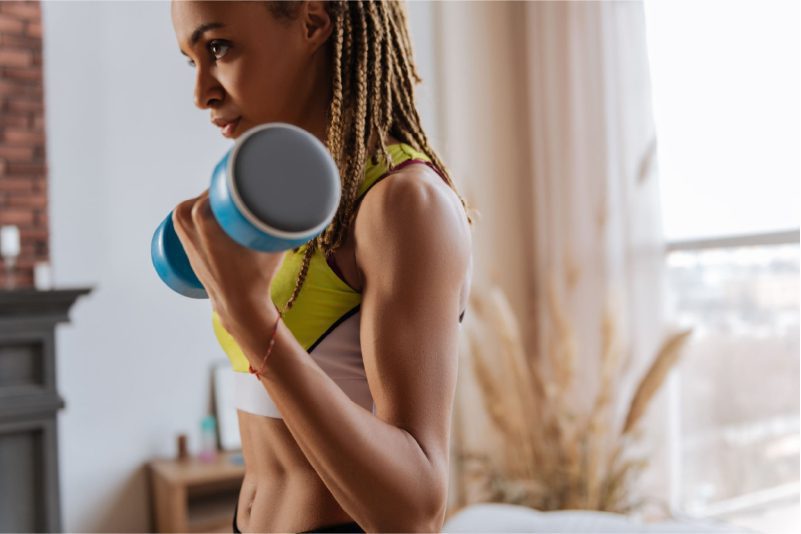

Bicep curls are a relatively simple exercise, but they can also be done incorrectly or inefficiently. Here are some common bicep curl mistakes and how to avoid them:
- Not warming up properly: Warming up is important for any exercise, but especially for bicep curls, as they involve a lot of stress on your elbow and shoulder joints. Warming up can help you prevent injury, improve your performance, and reduce muscle soreness. To warm up properly for bicep curls, you should do some dynamic stretches for your arms, shoulders, and wrists, such as arm circles, shoulder rolls, wrist rotations, etc. You should also do some light cardio for 5 to 10 minutes, such as jogging, skipping, cycling, etc., to increase your blood flow and heart rate.
- Using too much or too little weight: Using too much weight can compromise your form and technique, and increase the risk of injury. Using too little weight can limit your muscle growth and progress. To find the right weight for bicep curls, you should use a weight that allows you to do 8 to 15 repetitions per set with good form and moderate effort. If you can do more than 15 reps easily, you should increase the weight. If you cannot do at least 8 reps with good form, you should decrease the weight.
- Not contracting or stretching your biceps fully: Contracting your biceps means squeezing them at the top of the movement, while stretching them means extending them at the bottom of the movement. Both are important for stimulating your biceps and maximizing their growth. To contract your biceps fully, you should curl the weight until it is about an inch away from your shoulder, and hold it for a second while squeezing your biceps hard. To stretch your biceps fully, you should lower the weight until your arm is almost straight, but not locked out, and feel a slight stretch in your biceps.
- Not controlling or varying your tempo: Tempo means the speed and rhythm of your movement. Controlling and varying your tempo can help you increase the intensity and effectiveness of your bicep curls. To control your tempo, you should lift and lower the weight in a smooth and steady manner, without jerking or bouncing. To vary your tempo, you should change the duration of each phase of the movement (concentric, eccentric, isometric), such as doing fast or slow reps, or holding or pausing at certain points.
Conclusion about calories burned doing bicep curls
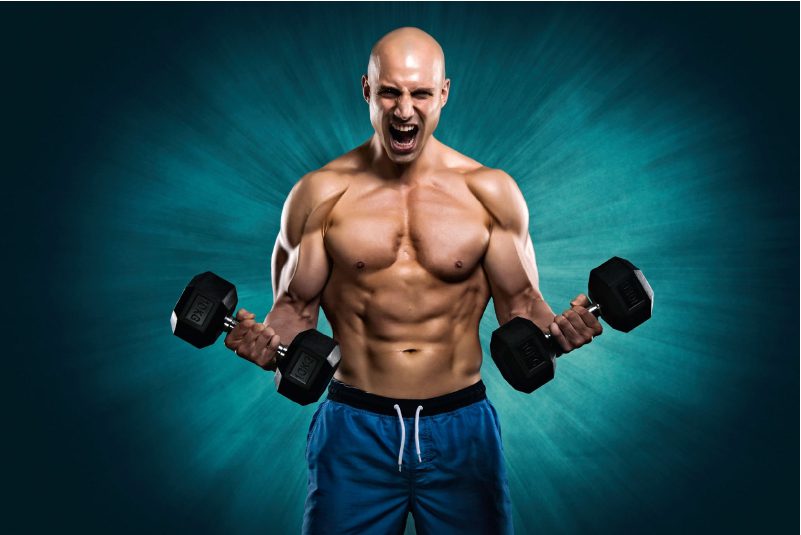

Bicep curls are a simple but effective exercise for strengthening and sculpting your arms. They can also help you burn calories and lose fat, especially if you do them with proper form, intensity, and variety. By following the tips and variations in this article, you can make your bicep curl routine more challenging and fun, and enjoy the benefits of having stronger and leaner arms.
FAQs about calories burned doing bicep curls
Here are some frequently asked questions about bicep curls and their answers:
How often should I do bicep curls?
It depends on your goals, fitness level, and recovery ability. Generally speaking, you should train your biceps once or twice a week, with at least 48 hours of rest between sessions. You can either dedicate a whole day to your arms or combine them with other muscle groups like chest, back, or shoulders.
How many bicep curls should I do?
It depends on your goals, fitness level, and the weight you use. Generally speaking, you should aim for 8 to 15 repetitions per set, and 2 to 4 sets per exercise. You can either use the same weight for all sets or increase or decrease the weight as you progress.
What are some common mistakes to avoid when doing bicep curls?
Some common mistakes to avoid when doing bicep curls are:
- Swinging or rocking your body to lift the weight. This reduces the tension on your biceps and increases the risk of injury. Keep your body still and use only your arms to curl the weight.
- Moving your elbows too far back or forward. This changes the angle of your biceps and reduces their effectiveness. Keep your elbows close to your body and only move them slightly at the top of the movement.
- Curling the weight too high or too low. This limits the range of motion of your biceps and reduces their stimulation. Curl the weight until it is about an inch away from your shoulder, and lower it until your arm is almost fully extended.
- Gripping the weight too loosely or too tightly. This affects the activation of your biceps and the control of the weight. Grip the weight firmly but comfortably, and squeeze it at the top of the movement.
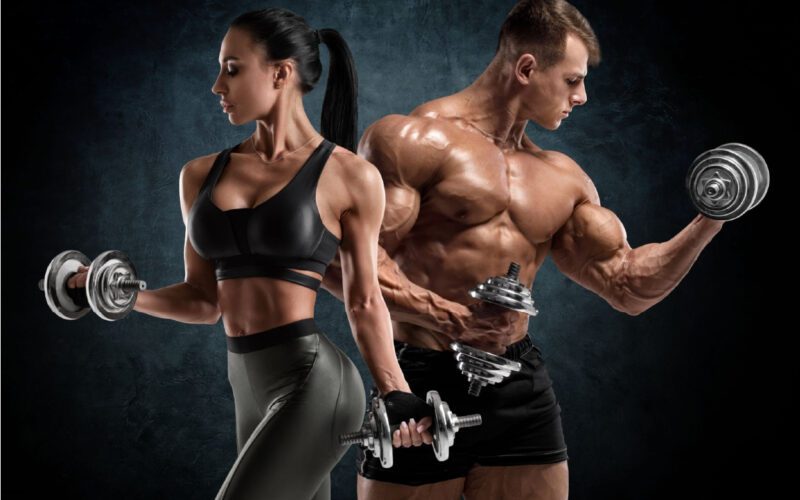
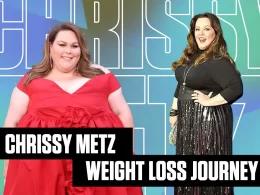


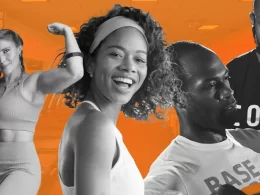
Comments 2
Comments are closed.